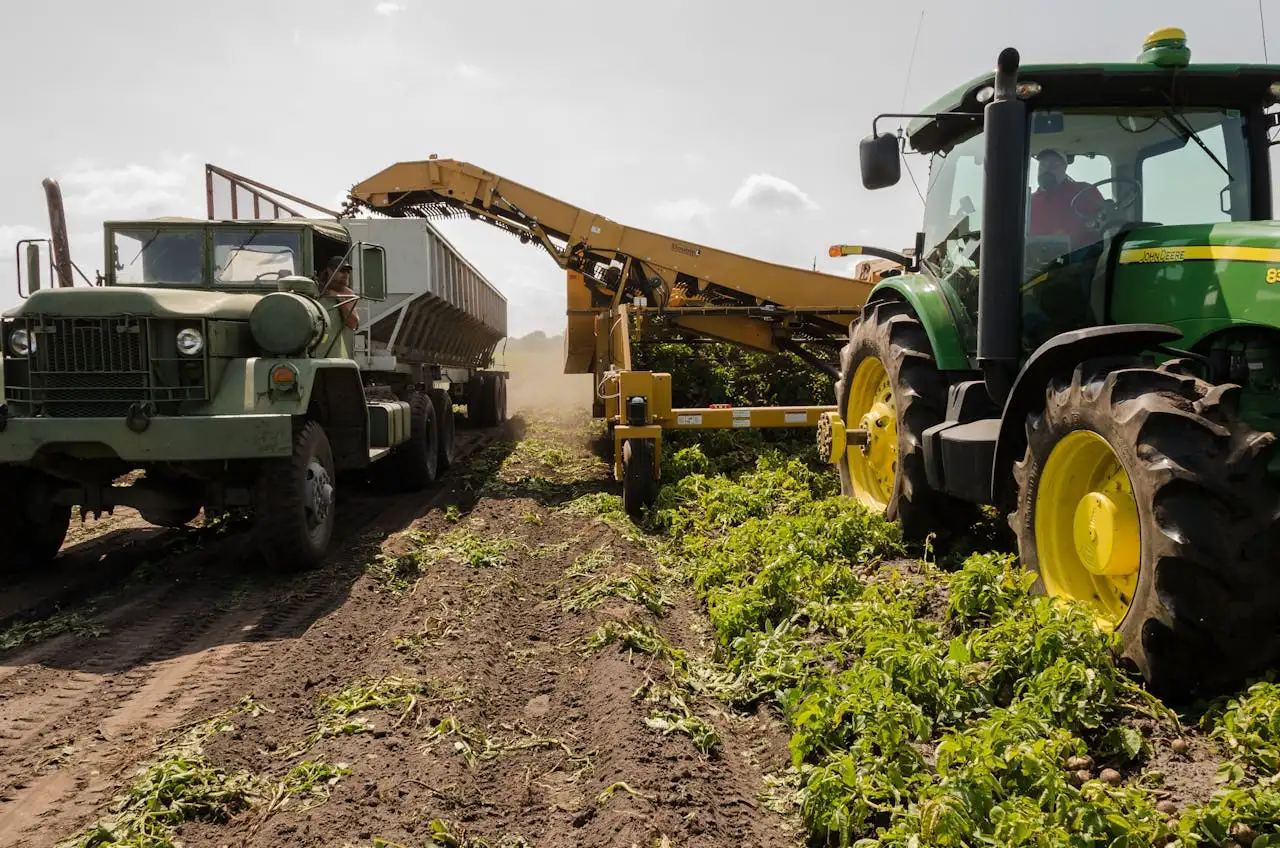 Agro Yield
Agro Yield
09 Jun 2024


10 Jun 2024
When the stock market crashes or interest rates rise, people start looking for safer places to put their money. In times like these, farmland in the United States becomes even more valuable—not just as a place to grow crops, but as a stable and productive asset that can protect wealth over time.
While real estate prices may go up and down, and while cryptocurrencies can lose half their value in a month, farmland tends to hold steady. Why? Because no matter what happens, people still need to eat.
In this article, you’ll learn why U.S. farmland is one of the most secure and time-tested investments, especially during tough economic times. We’ll explain how farmland works as an asset, why it’s more stable than many other investments, and how companies like Agro Yield Partners make it easy for everyday investors to get involved.
The most basic reason farmland holds value is simple: people need food. Even in a bad economy, people can cut back on vacations or electronics, but they still need corn, wheat, soybeans, fruits, vegetables, and meat. Food is not optional—it’s essential.
That means farms still make money, even if the stock market is down or businesses are laying people off. Grocery stores stay open. Supermarkets buy produce. Schools, prisons, and hospitals still serve meals. The system of food production keeps running. In fact, when people are cooking more at home during economic downturns (like during COVID), food demand may even rise in certain areas.
This constant demand makes farming much less risky than industries that depend on luxury goods or optional spending.
Imagine someone who put $100,000 into the stock market at the beginning of 2020. When COVID hit, that investment dropped sharply within weeks. It did bounce back later, but the panic was real.
Now imagine someone who owned 100 acres of soybean farmland in Illinois. That land continued growing crops. It didn’t disappear overnight. The farmer planted, harvested, and sold soybeans just like always. Prices might have shifted a little, but the land still worked—and still had value.
Unlike stocks, which can lose 30% in a few days, farmland changes value slowly. Even in a recession, it usually holds steady or even increases in price. That makes it a smart part of a balanced investment plan.
There are four key reasons farmland holds value even during bad economic conditions:
Farms produce real, physical goods—crops and livestock that people use. These aren’t “paper profits” or digital coins. They’re actual things the world needs.
They’re not making more land. The U.S. has a fixed amount of good farmland. As cities grow, some farmland is lost, which makes the remaining land even more valuable.
When prices rise (inflation), farmland usually becomes more valuable, not less. That’s because food prices go up, and farmers can earn more per acre.
Farmland investors often earn money from rent (if they lease the land to a farmer) or from a share of the crop revenue. This means steady cash income, even during tough times.
The USDA (United States Department of Agriculture) tracks farmland value and rental income every year.
In 2008, during the global financial crisis, many assets lost value.
But average farmland prices in states like Iowa and Nebraska stayed flat or even grew slightly.
From 2008 to 2023, U.S. farmland increased in value by about 150% on average.
The average return (from rent + land appreciation) has stayed between 8% and 12% per year over the past two decades.
These are long-term, reliable numbers—not quick profits, but strong and consistent growth. And in investing, consistency is powerful.
Here’s a simple side-by-side look:
Investment Type High Risk in Recession? Regular Income? Tangible Asset? Steady Growth? Stocks Yes Maybe (dividends) No No Crypto Very High No No No Commercial Real Estate Yes Yes Yes Sometimes Farmland Low Yes Yes YesIt’s not that you shouldn’t have other assets. It’s just that farmland adds a strong, safe layer to any portfolio.
Let’s go back in time.
When Wall Street banks collapsed, farmland held steady. Farmers still planted corn. Wheat still grew. Landowners still got paid. In fact, many large investors, like pension funds, began buying farmland during this time to protect their money.
Farmland was one of the few assets that actually increased in value. Families were cooking more at home. Supermarkets needed more supply. And investors looked for “safe havens.” Agro Yield saw record growth during this time because people wanted to invest in something that wouldn’t vanish in a week.
You may be wondering, “Okay, but how do I actually invest in farmland if I don’t own a farm?”
That’s where companies like Agro Yield Partners come in.
We find high-quality U.S. farms. We do the research. We offer these farms to people like you in the form of investment projects or plans.
You don’t have to drive a tractor or check soil moisture. You choose the farm or plan that fits your budget, and we manage the rest. You get updates, you earn income, and you grow wealth.
You can start with as little as $5,000. Some people invest more, some less. But everyone can participate.
Let’s imagine a project offered during a recession:
Location: Nebraska
Crop: Corn and Soybeans
Investment Term: 3 years
Minimum Investment: $10,000
Return Payout: Monthly rental income
Projected Return: 8% per year
Insurance: Full crop insurance included
Exit Option: Land sold or refinanced at end of term
This kind of project still performs even when banks are shaky or tech stocks fall. Why? Because the crops still grow, buyers still buy, and land still holds value.
Farmland isn’t for everyone. But it is perfect for people who:
Want long-term, safe growth
Don’t want the stress of daily price swings
Believe in the future of U.S. agriculture
Want to diversify away from stocks and crypto
Value monthly or quarterly income
Farm investments are perfect for retirement plans, family legacy funds, or even just stable side income.
Let’s say you invest $15,000 in a 2-year blueberry farm in Oregon through Agro Yield Partners.
The farm pays 10% income per year = $1,500 per year
Over 2 years = $3,000 in income
At the end of the term, the land sells for a 15% gain = $2,250
Total return = $5,250 on a $15,000 investment
That’s a total return of 35% over two years
Again, this is not get-rich-quick. But it’s stable, reliable growth that isn’t tied to stock market chaos.
Crop insurance can cover losses. We also select farms in areas with reliable water access.
Yes, all investments carry some risk. But farmland has lower risk compared to many alternatives.
Yes, your funds are locked for the duration of the project term. This is what allows farms to plan long-term and return strong results.
You do not. As long as you can pass standard ID checks and follow legal rules, you can invest from outside the U.S.
Step 1: Visit [agroyieldpartners.com]
Step 2: Create a free investor account
Step 3: Browse available farm projects or investment plans
Step 4: Select your option and fund it securely via bank transfer
Step 5: Track your project via monthly updates, earnings reports, and photos
Step 6: Receive payments directly into your bank account
Step 7: Reinvest or withdraw when your project ends
There’s an old saying: “The best time to plant a tree was 20 years ago. The second-best time is now.”
The same goes for investing in farmland.
You don’t need to be a farmer. You just need to see the value of real, honest food production. Agro Yield Partners makes it easy to join a farm-backed future. You protect your money, support American agriculture, and build wealth that stands strong—even when the world feels uncertain.
In a world full of flashing screens and hype, farmland is calm, solid, and dependable. It grows food, and it grows your future.
 Your Money
Your Money